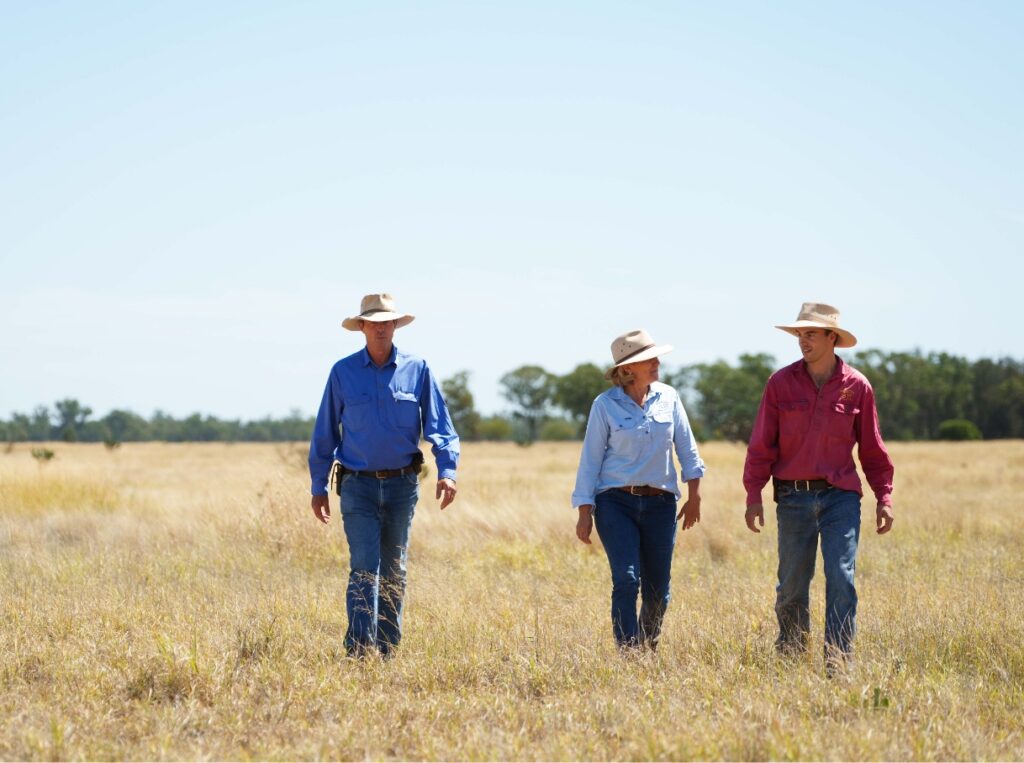Soil carbon farming involves implementing management actions to increase carbon inputs into the soil or reduce soil organic carbon loss. This enhances soil health and productivity, fostering species diversity, land resilience, and income security.
Soil carbon farming improves species diversity by promoting healthier soil ecosystems, which support a wider range of plants and organisms, enhancing biodiversity.
By enhancing soil structure and fertility, soil carbon farming improves the resilience of the land, making it more resistant to erosion, drought, and other environmental stresses.
Soil carbon farming improves land security and income by providing sustainable land management practices contribute to long-term soil health, productivity, and economic stability.
Carbon farming provides additional income through carbon credits, fostering investment in land and businesses. This boosts local economies, enhances community resilience, and promotes long-term sustainability, strengthening the fabric of rural life.
Would your property qualify for a soil carbon farming project?
Here are several different methods that may apply to your business based on your farming type and the nature of the land.
What it is
Why It Matters
The application of lime to acidic soils
Addressing soil acidity allows for healthy growth roots in pasture and crops.
The re-establishment and rejuvenation of pastures through seeding or pasture cropping
Supports the growth of perennial pastures and year-long ground cover
Moving away from intensive to reduced to no tillage practices.
Reduces the oxidisation of soil carbon at the surface, and protects the soil microbiome.
Alternative stocking or reducing the rate and duration of stocking.
Allows for the rest and stimulates the growth of pastures, maximising photosynthesis and supporting biodiversity.
Applying nutrients to the land to address a material deficiency
Addresses the limiting factor in a pasture or cropping setting, allowing for more productive plant growth.
Using a legume species in pasture or cropping systems.
Legumes are nitrogen fixing plants, and introducing them into the system, supports soil microbes and carbon sequestration.
What it is
The application of lime to acidic soils
Why it matters
Addressing soil acidity allows for healthy growth roots in pasture and crops.
What it is
The re-establishment and rejuvenation of pastures through seeding or pasture cropping
Why it matters
Supports the growth of perennial pastures and year-long ground cover
What it is
Moving away from intensive to reduced to no tillage practices.
Why it matters
Reduces the oxidisation of soil carbon at the surface, and protects the soil microbiome.
What it is
Alternative stocking or reducing the rate and duration of stocking.
Why it matters
Allows for the rest and stimulates the growth of pastures, maximising photosynthesis and supporting biodiversity.
What it is
Applying nutrients to the land to address a material deficiency
Why it matters
Addresses the limiting factor in a pasture or cropping setting, allowing for more productive plant growth.
What it is
Using a legume species in pasture or cropping systems.
Why it matters
Legumes are nitrogen fixing plants, and introducing them into the system, supports soil microbes and carbon sequestration.

CarbonLink has pioneered carbon farming with bespoke processes honed through innovation. While model-based methodologies may seem cost-effective, they often deliver unreliable outcomes, potentially costing farmers money and more in the long run.
That’s why CarbonLink invests in a peerless Research and Development team. Continuously evolving processes and techniques ensure tangible benefits for farmers, enhancing the success of their carbon farming projects through robust, research-based approaches.

Soil carbon farming is a type of regenerative agriculture that focuses on rebuilding soil health by increasing soil organic matter. This is done through practices like cover crops, no-till, time controlled grazing, and composting. Soil carbon farms are often more resilient to drought and pests, and they can improve water quality and sequester carbon from the atmosphere. In recent years, soil carbon farming has gained attention as a mechanism to reduce business risk via additional income selling ACCUs. As the world looks for ways to reduce greenhouse gas emissions, soil carbon farms offer a potential solution that also has co-benefits for soil health and food security.
Carbon farming is a transformative solution bridging the gap between agricultural productivity and environmental management. At its core, this innovative approach can increase land productivity by enriching soil fertility and boosting water retention, ensuring farms remain profitable and productive for future generations.
Farmers have significantly increased the organic content of their soil through a range of practices recommended as part of a broader land management plan. This improves the soil’s structure, promotes microbial activity, and leads to superior nutrient retention and water infiltration. The result is a better and more resilient agricultural landscape capable of producing greater income and productivity.
Beyond improving your farm’s productivity, carbon farming is a critical ally in the fight against climate change. Carbon farming practices contribute meaningfully to mitigating climate impacts with initiatives like reforestation and habitat restoration and play a pivotal role in enhancing biodiversity, which improves outcomes for native flora and fauna as well as your property.
The economic landscape for farmers is also improved through carbon farming, with the opportunity to earn additional income via the sale of Australian Carbon Credit Units (ACCUs). The ACCU system is designed to encourage adopting sustainable land management practices.
The Emissions Reduction Fund is a soil carbon farming initiative that was established in 2014 by the Australian government. The aim of the fund is to encourage farmers to adopt practices that will increase soil organic matter and help to sequester carbon dioxide. Soil carbon farming can involve a range of activities, such as reducing tillage, planting cover crops, and using organic manure. These practices can help to improve soil health, increase crop yields, and reduce greenhouse gas emissions. In addition, the Emissions Reduction Fund provides financial incentives for farmers who adopt soil carbon farming practices. As a result, the fund is playing an important role in promoting sustainable agricultural practices in Australia.
Australian Carbon Credit Units (ACCUs) are a unit of tradeable currency in Australia’s Emissions Reduction Fund. One ACCU represents one tonne of carbon dioxide equivalent that has been abated through soil carbon farming. Soil carbon farming is a type of agriculture that improves the soil’s ability to store carbon. This helps to offset emissions from other sources, such as power plants and factories. ACCUs can be bought and sold on the open market, and they can be used to offset emissions from other activities. For example, a company that emits 100 tonnes of carbon dioxide equivalent could purchase 100 ACCUs to offset its emissions. Alternatively, the company could reduce its emissions by implementing soil carbon farming practices on its own property. In this way, soil carbon farming can help to reduce emissions and encourage investment in climate-friendly practices.
In Australia, carbon credits are generated through soil carbon farming practices. Soil carbon farming involves activities that increase the amount of carbon stored in the soil, such as time controlled grazing, planting of legumes etc. These practices can help to offset emissions from other activities, such as burning fossil fuels. Carbon credits are issued by the Australian government’s Clean Energy Regulator (CER) and can be traded on the open market. The CER sets a price for carbon credits based on supply and demand. Credits that are purchased by businesses or individuals are used to offset their emissions. For example, a company that produces a lot of emissions may purchase carbon credits to offset their impact on the environment. Soil carbon farming not only helps to reduce emissions, but it can also improve soil health and fertility. In addition, it can provide an income stream for farmers and other landowners.
CarbonLink’s NetImpact Programme is designed to simply set up and measure a carbon farming project, and CarbonLink is committed to guiding farmers from knowledge acquisition to the practical implementation of carbon farming projects. Our comprehensive support includes:
To find out more get in touch or download our brochure.



